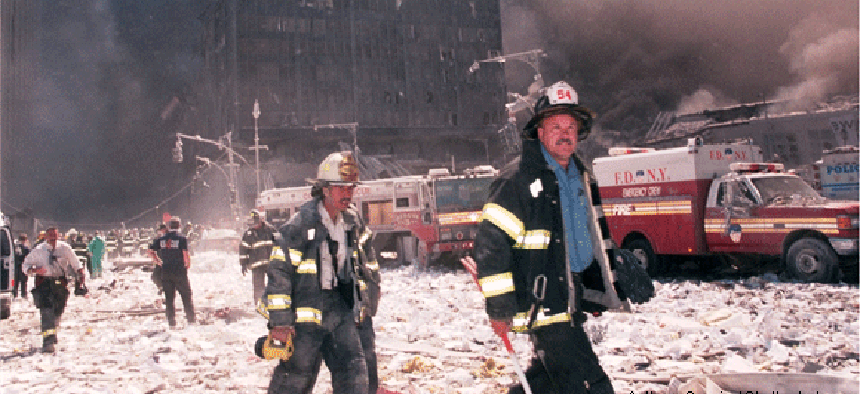When radios can’t connect, IP provides the bridge


Connecting state and local government leaders
Once data has been put on an IP network, disparate types of devices -- such as siloed first responder radios -- can be linked almost anywhere in the world.
The need for interoperable communications among first responders has been recognized for years and was highlighted by the events of Sept. 11, 2001, when lives were lost because of the inability of police, fire and rescue personnel to talk with each other during the terrorist attacks in New York. Enabling communications between agencies is a challenge, however, because most are using homegrown systems operating in different frequency bands and using different protocols.
Such separate systems have the advantage of providing privacy and protecting against cross-channel interference, but the drawbacks of such siloed systems now are seen as outweighing the advantages.
Efforts are under way to create a unified system to allow better communications, including Project 25, an effort to develop a standardized digital radio protocol for law enforcement and emergency services in North America, and plans for a national wireless network operating in a dedicated radio band. Project 25 has dragged along for 23 years, however, with standards slow to emerge, and the complexity and expense of creating and operating a national network also hindering progress. Moreover, both programs would require the retooling of radio systems now in use by many departments, an expense many could not immediately bear.
One solution is to use Internet Protocol as a bridge between different types of systems. Once data is converted to IP packets, multiple types of traffic can be handled more or less the same and delivered to almost any destination. This enables not only interoperability between different types of radio and telephone systems, but it allows the exchange of video, images and other data types as well.
One such solution available on GSA Schedule contracts is from Mutualink, which provides peer-to-peer connectivity using IP gateways on traditional radio systems. Mutualink is used by crews on New Jersey’s populous Bergen County and was employed during Hurricane Irene and Superstorm Sandy.
Once the incoming radio signal is converted to IP, it can be routed to other gateways, where the packets are converted again to the proper radio or telephony format.
Mutualink offers a virtual private network interconnect service to a Mutualink point of presence to transport the traffic, but most customers use a commercial Internet provider, company CTO Joe Boucher said. The gateway usually is placed behind an Internet router to create a “walled garden” for the traffic.
Connections to the gateway can be made by the end user through a dedicated radio channel, such as a pre-defined mutual-aid channel used by participating agencies. In most cases the connection is handled by an administrator or a dispatcher, who uses a terminal to link channels upon request through an “incident box,” established for specific events. Agencies with gateways participating in that incident are able to create links with each other on the fly, without prior coordination.
Cryptographic keys are generated when a link is established, and traffic between gateways is protected using 256-bit AES encryption.
One of the advantages of IP is the ability to share video, images and data between agencies as well as voice. “We have recently seen more growth in the multimedia space,” said Boucher, fueled by the use of smart phones in the field.
NEXT STORY: Interoperable radios: Perfect vs. the possible




